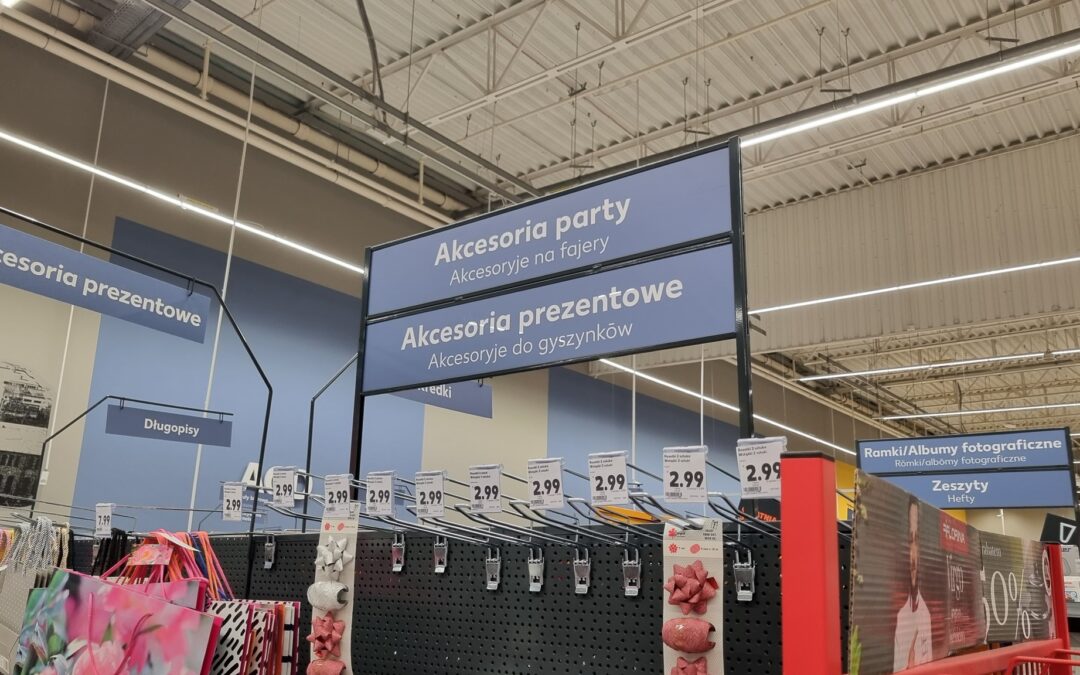Shoppers at two stores in the Kaufland supermarket chain in Silesia in southwestern Poland can now look for items in the local ethnolect as well as Polish – “Sery żółte” (hard cheeses) become “Kyjzy”, and “Musztardy” (mustards) are “Zymfty”.
The bilingual signs in Polish and Silesian indicating what items can be found on the shops’ aisles have been prepared by Adrian Goretzki, who runs the Po Naszymu (In our language) Silesian language office. He has been promoting the use of Silesian for many years and lobbying for it to be given the status of a regional language.
“I am simply proud of this project because the client, in this case, Kaufland Poland, decided to use the Silesian language as its normal means of communication,” says Goretzki, as quoted by the local issue of the daily Gazeta Wyborcza.
“Seemingly ordinary product category labels are further proof that the Silesian language is a living communication tool in Upper Silesia,” he added.
One of the shops is located in Katowice and the other in Knurów. According to Gazeta Wyborcza, the campaign might be expanded to other shops in the region as well.
“There are many reasons for giving Silesian the status of a language. I am glad that we have just received further proof that this language is alive,” said Goretzki. His office has, among others, prepared translations into Silesian of adverts for Samsung and Coca-Cola and created a comprehensive translation of the Android operating system and Canva app into Silesian.
Silesian is an umbrella term for West Slavic ethnolects spoken mostly in southwestern Poland, but also in the Czech Republic and Slovakia. In Poland, during the 2011 census data collection, almost 800,000 people declared they consider their ethnicity to be Silesian, and 529,400 said they use Silesian on a daily basis.
The 2021 census data on nationalities and languages is yet to be published.
Politicians from Silesia have for years have been demanding a change in the law to classify Silesian as a regional language rather than a dialect of the Polish language. This would pave the way for education in Silesian in Polish schools and would force authorities to provide funding for language development.
“The authorities of our country have been telling us for four parliamentary terms that we do not exist, or that we are something other than we are,” said Silesian politicians in a letter to Prime Minister Mateusz Morawiecki, when their motion to classify Silesian as a regional language was rejected last year.
“Should we tell [our ancestors] that they were mistaken because Poland is turning out not to be a mother but an evil stepmother?”
For now, the only official regional language in Poland is Kashubian, spoken in northwestern Poland. Currently, about 400,000 speakers of Kashubian live in Poland, of whom about 100,000 declare it as their mother tongue.
Main photo credit: Ślōnski suchar na dzisiej / Facebook

Alicja Ptak is deputy editor-in-chief of Notes from Poland and a multimedia journalist. She has written for Clean Energy Wire and The Times, and she hosts her own podcast, The Warsaw Wire, on Poland’s economy and energy sector. She previously worked for Reuters.




















